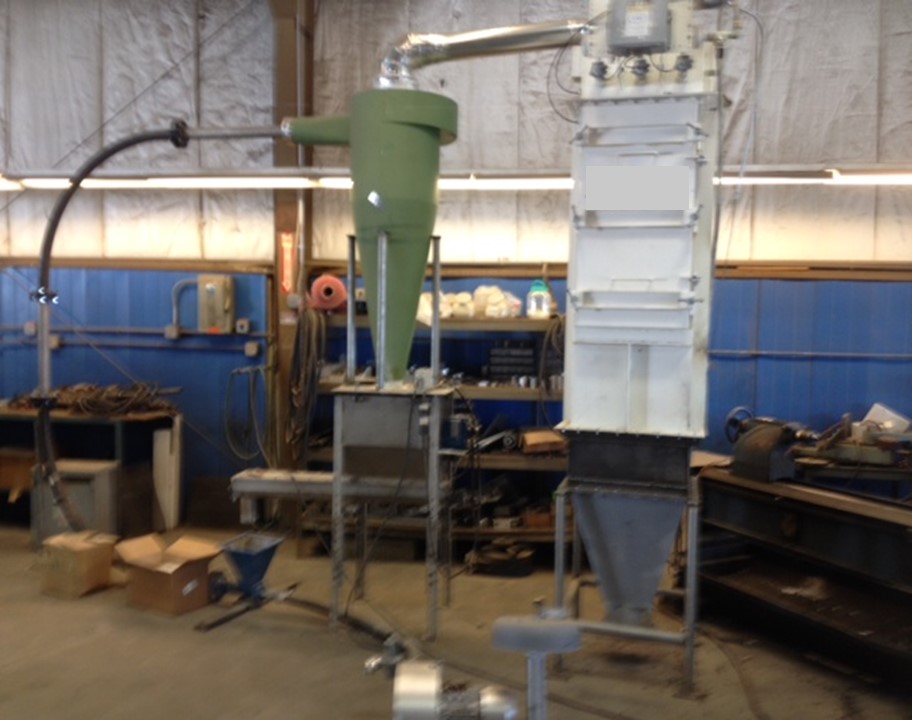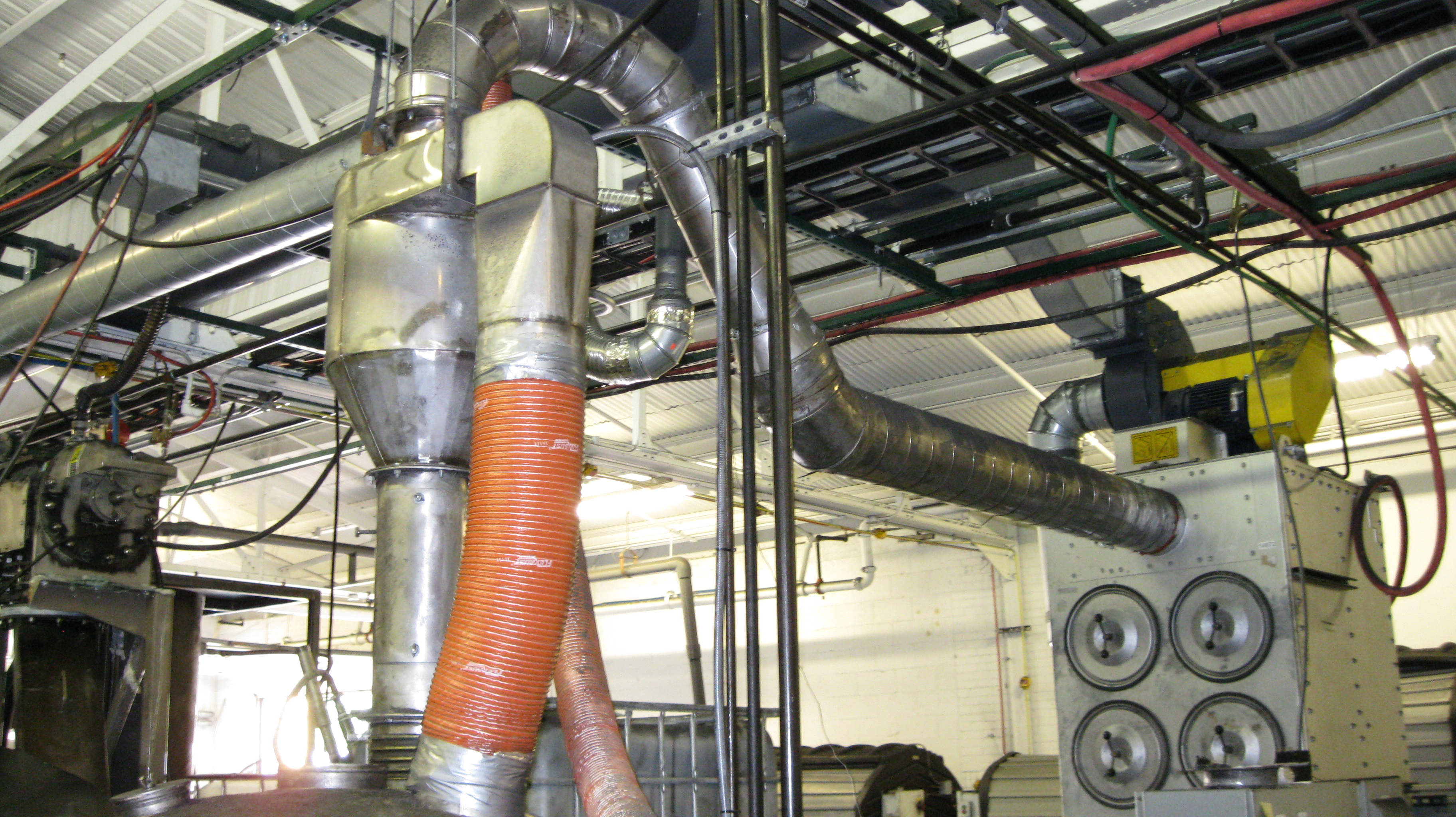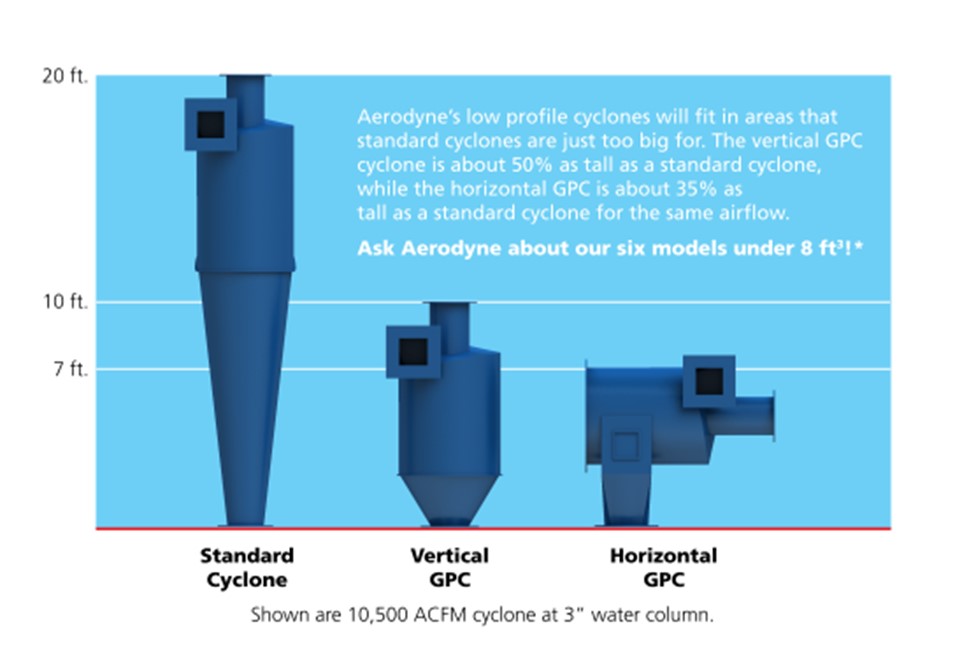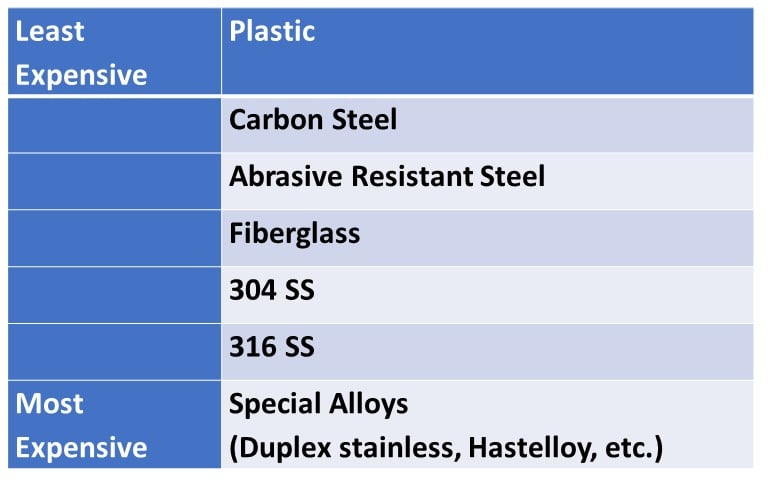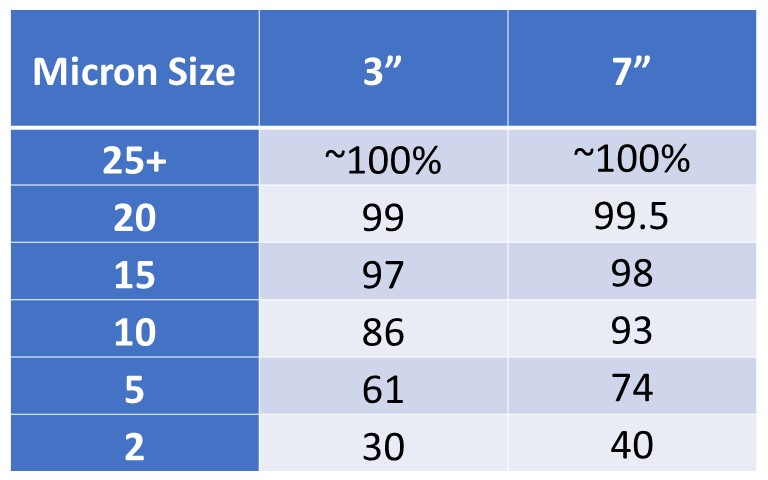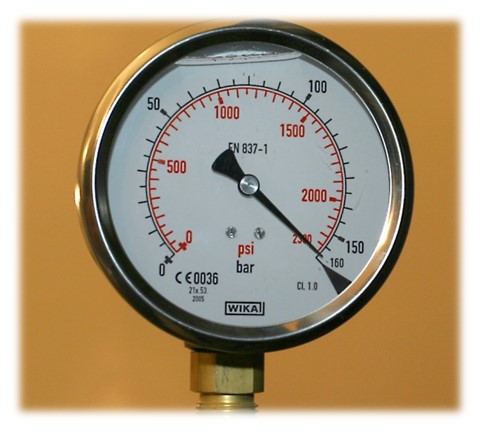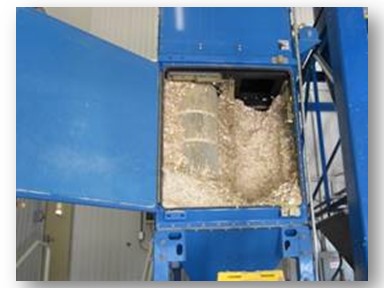Cyclone pre-filters offer multiple advantages to existing dust collection systems. They lower the dust loading going into the dust collector, thereby allowing them to concentrate on the smallest particles. Here we will discuss the benefits for both wet collectors and dry collectors.
Wet Scrubbers
Wet Scrubbers – cyclones remove the particulate before the particles see the liquid. Wet scrubbers use liquid (often times water) to capture the dust. The water droplet surrounds the particulate, thereby increasing the particle size of the particle so it is easier to collect. Once the particulate is in the water droplet, it falls into the scrubber sump and is removed from the air-stream. The problem is that as more and more droplets enter the sump tank, a slurry is formed and will require a blow-down to prevent plugging up the nozzles, pump and packing, etc. This requires adding additional liquid and removing slurry.
Benefits of Cyclone Pre-Filter on Wet Scrubbers
By installing the cyclone pre-filter, you are decreasing the amount of particulate entering the wet scrubber. This means less particles will be in the sump tank, lowering the amount in the slurry and requiring less blowdown. This decreases the amount of liquid you need to add to the system. Lowering the blowdown rate also decreases the cost to treat the blowdown liquid. The blowdown slurry is often sent to a waste water treatment facility (facility or municipal). Each gallon of blowdown must be treated so that it doesn’t contaminate the ecosystem. This additional cost is often forgotten about when evaluating a wet scrubber.
Fabric Filters
Fabric filters (baghouses, cartridge collectors, HEPA filters) – Cyclone pre-filters provide many benefits for fabric filters. Fabric filters work by building up a dust layer which then lets air pass, but not dust particles. As the layer gets thicker it is harder for air to pass through. Baghouses and cartridge collectors often clean the filters periodically by blowing compressed air in them, causing the filters to expand and shake off the top layers of dust.
Benefits of Cyclone Pre-Filter on Fabric Filters
The cyclone pre-filter minimizes the amount of dust coming to the filters. They also collect the largest dust, only allowing the fine dust to get to the filters. The fine particles will then more evenly collect on the filters. The lower dust loading mean that the filters will not require as much cleaning which extends the life of the filters. Since the filters are cleaned by blowing compressed air into them, the expansion will eventually cause tears. And over time, less and less particulate will fall off as dust works its way into the filter.
Filters also have issues with certain type of dusts. Dust that is sticky and hygroscopic can cause filters to plug up faster, especially if there is humidity in the area. Abrasive dust can cause premature holes in the filters and those holes in the filter allow dust to pass through the collector and out into the environment. Again, by minimizing the dust going to the filter, you extend the filter life and minimize the possibility of filters plugging.
The other big savings is that by installing a pulse-on-demand controller, with a cyclone pre-filter, you will be able to control your cleaning cycles. Therefore, you will only clean the filters when it’s needed. This will save your filters and minimize your plant air usage.
The other benefit that cyclones provide is that they capture the dust before it reaches the filters. Since the filters have a dust layer at all times, the dust that is collected is contaminated by all dust that it has seen before in the life of the filters. If the material you are collecting is expensive, perishables or are controlled substances (pharmaceutical manufacturing), then collecting in a baghouse could cause issues due to contamination from the filters. The cyclone will collect the material and can be easily cleaned between batches.
Top 5 Reasons to Use a Cyclone as a Pre-Filter Whitepaper
Find out ow pre-filters help to extend bag or filter life, and improving removal efficiencies.

How the Aerodyne SplitStream Cyclone Works
The SplitStream Cyclone Collector is designed for dust collection systems where tough dust like abrasive, sticky, fibrous, hygroscopic or granular persist.

To learn more about which dust collector, please contact our experts at 440-543-7400 or visit our website: www.dustcollectorhq.com






